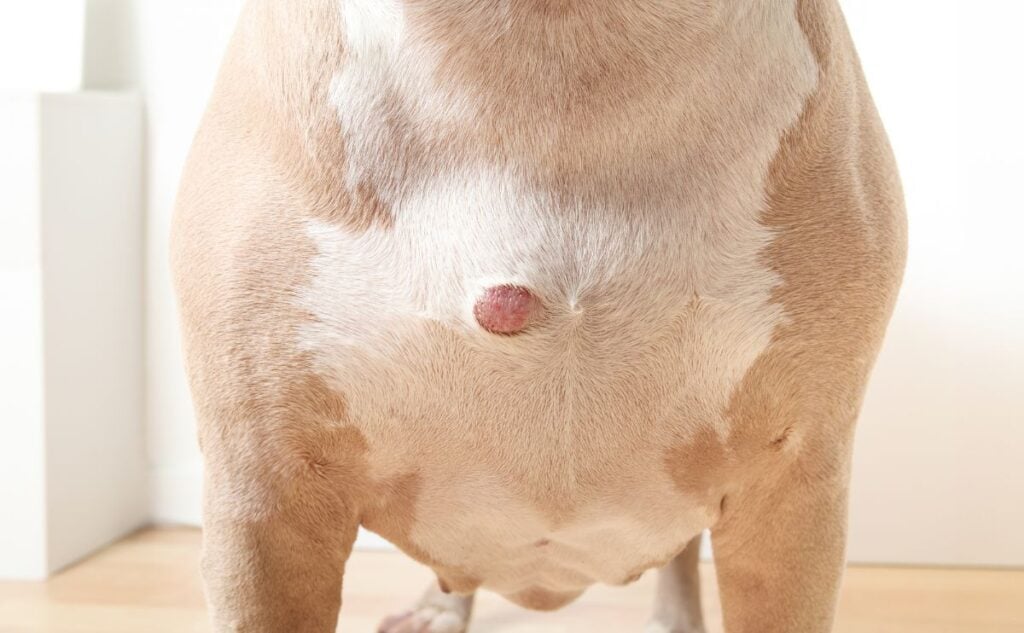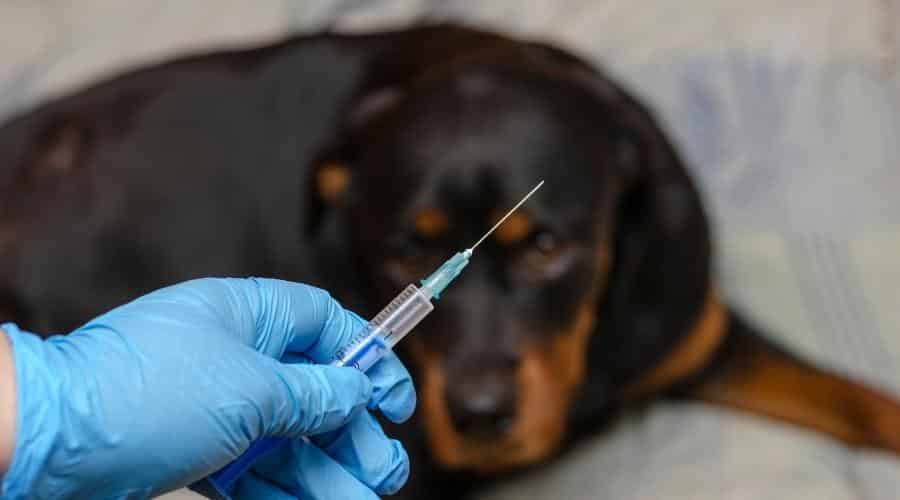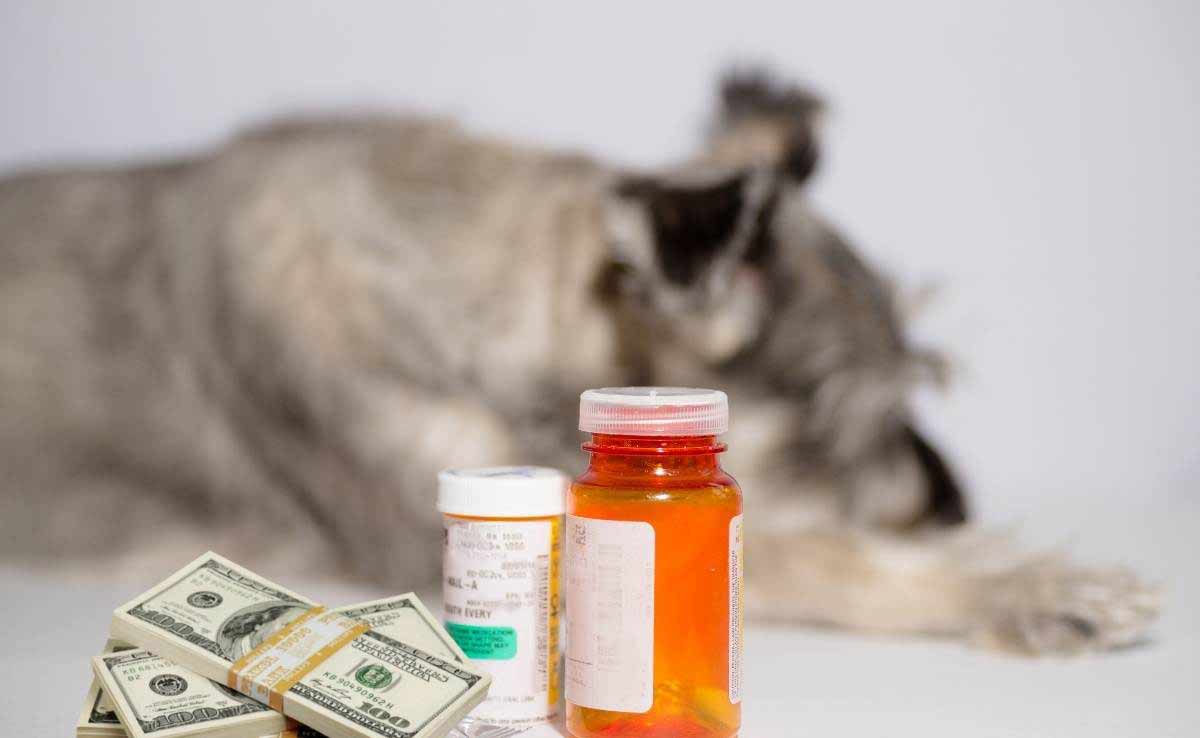Is That Lump On Your Dog Dangerous? Learn The Truth About Histiocytoma
When you purchase through links on our site, we may earn a commission. Here’s how it works.

Finding a lump on your dog is scary for any pet parent. However, when they are young and seemingly otherwise healthy, a lump could catch you by surprise, and it’s easy to fear the worst. Let’s find out about one of the types of lumps that mainly affects younger dogs, the histiocytoma.
Table of Contents
What Is Canine Histiocytoma?
A histiocytoma is a type of lump or tumor that affects dogs, especially those who are young. The majority of histiocytomas are benign, meaning they are not cancerous, although similar malignant conditions can occasionally occur.
What Are The Types Of Canine Histiocytoma?
While most histiocytomas are benign, cancerous histiocytoma in dogs can occur rarely.
Cutaneous Histiocytoma
These lumps are by far the most common type of histiocytoma that we see in veterinary practice. A cutaneous histiocytoma in dogs usually looks like a single, raised, pink, hairless lump on the skin. Thankfully, most cutaneous cases are examples of benign histiocytoma in dogs, meaning that they won’t spread anywhere else. In fact, they usually disappear on their own within eight to ten weeks.
However, if a dog scratches, licks, or otherwise aggravates a histiocytoma, they’re likely to become infected and may not settle so quickly or easily. I have seen many cases of histiocytomas in juvenile dogs over my years in practice – at least one or two a month, and luckily, it is uncommon that they require any surgical treatment.
Malignant Histiocytosis
Benign cutaneous histiocytomas mainly occur in young dogs, although occasionally older dogs get them too. However, this is very different from malignant histiocytosis, a type of aggressive cancer that occurs rarely in older dogs, or breeds that are genetically predisposed. These dog breeds include the Bernese Mountain Dog, Golden Retriever, and Rottweiler.
Malignant histiocytosis occurs when large numbers of abnormal histiocytes (a type of cell involved in the immune system) are produced and progressively invade various organs. In these cases, it’s less likely that, as a pet parent, you’ll notice a lump on your dog. Instead, you might notice more subtle or general symptoms like weight loss, poor appetite, and lethargy, or in more advanced cases, breathing difficulties and enlarged lymph nodes (‘glands’).
Fibrous Histiocytoma
You may hear your vet refer to a histiocytoma as a fibrous histiocytoma, especially if they have performed a biopsy or removed the lump and sent it to the lab for identification. Fibrous histiocytomas in dogs are usually benign. However, malignant fibrous histiocytoma, a type of soft tissue sarcoma, does occur sometimes. Veterinary professionals are still discovering more about the types of histiocytomas, and some lumps don’t seem to fit perfectly into any category. Rest assured, though, your veterinarian will be able to recommend the most appropriate treatment options.
Where Do Cutaneous Histiocytomas Develop In Dogs?
Paws
It’s quite common for young dogs to get a histiocytoma on their paw. If this happens, you might not notice the lump itself, but you might notice that your dog is suddenly licking their paw and making it sore. If they’ll let you, try to carefully have a look to see if you can see a histiocytoma, thorn, or any other reason for the licking. It’s also worth noting whether they’re just licking one paw or more than one because allergies, parasites, and other skin conditions can cause dogs to lick their paws, too.
Ears
Another quite common histiocytoma location is a dog’s ear. In this location, it’s far less likely that the lump will bother your dog, so you might not notice any scratching, head shaking, or other symptoms that suggest it’s causing a problem. Of course, the lack of symptoms and the relatively small size of a histiocytoma means that at this site, it would also be hard to spot! That’s why it’s a really good idea to check your dog from head to toe (to tail!) regularly in case of any new lumps or other lesions.
Lips
A histiocytoma on a dog’s lip can be really frustrating because it’s very likely that the dog will lick it. This means that it is more likely to become infected and persistent. On the other hand, since you’re likely to be nose-to-nose with your dog quite often when you’re petting them, it’s much easier to spot in this location.
Legs
Histiocytomas on dog legs occur reasonably frequently, and again, you might only be alerted to the problem because you notice your dog licking their leg a lot. The upside of a histiocytoma on a leg is that, depending on the location, placing a dressing or sock could help prevent licking and allow the lump to settle.
What Causes Histiocytomas In Dogs?
Cutaneous histiocytomas appear to be caused by the sudden excessive multiplication of Langerhans cells, although the underlying reason for this isn’t fully understood. It may be related to genetics, but the possibility of other triggers, including viruses and insect bites, has not been ruled out. While this means that there’s not much you can do to stop your dog from developing a histiocytoma, you can make sure that you spot them early and prevent licking or trauma so that they regress as quickly as possible.
How Is A Canine Histiocytoma Treated?
Treatment options for histiocytomas in dogs include anti-inflammatories, antibiotics, and surgery. However, no treatment is usually required, and as long as the histiocytoma can be kept clean, dry, and free from trauma from licking or scratching, it should disappear on its own within a couple of months. If the lump is causing pain or is persistently infected despite treatment, your veterinarian might recommend cryotherapy or a small surgery to remove it.
What About Home Treatments?
If you are looking for a histiocytoma dog home treatment, you might have heard people mention using apple cider vinegar for histiocytomas in dogs. While this may keep the area clean and free from germs, it could also cause irritation. In reality, current evidence is anecdotal, and since histiocytomas usually regress without intervention, their healing may be independent of the apple cider vinegar treatment.
Follow Your Vet’s Instructions
Histiocytomas are usually benign, affect young dogs, and regress on their own. However, it’s important to get any new lump on your dog checked early on by a veterinarian in case it is something more serious. In the meantime, see our guides on lumps on dogs, types of cysts on dogs, and dog tumors to learn more about these common health concerns.



